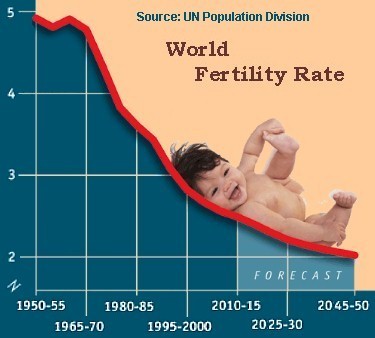India’s Population Grows, Fertility Rate Declines Sharply
India’s Population Grows, Fertility Rate Declines Sharply
Why in the News?
The UNFPA’s 2025 State of the World Population Report estimates India population live at 1.46 billion, contributing significantly to the world population. The report highlights India’s Total Fertility Rate (TFR) of 1.9, which is below replacement level. It also sheds light on shifting India demographics, a growing elderly population, and a large working-age segment, indicating India’s demographic transition and overall India population growth trends. These changes, coupled with the increasing population density of India, present both opportunities and potential challenges for the nation, including implications for life expectancy and healthcare systems.
Key Demographic Insights from UNFPA Report:
- India population in billions: 1.46 billion (April 2025).
- It is projected to peak at 1.70 billion in about 40 years, then decline, according to India population projections.
- China’s population currently stands at 1.41 billion.
- Total Fertility Rate has declined to 1.9, below the replacement level fertility of 2.1, indicating a significant fertility rate decline in India.
- The Total Fertility Rate is the number of children a woman is expected to bear in her lifetime.
- A Total Fertility Rate of 2.1 is needed for population replacement without growth.
- The Indian sex ratio has shown improvement, reflecting changing societal attitudes and government initiatives.
Youth and Working-Age Population Trends
- 68% of India’s population is in the working-age population group (15–64 years).
- Youth composition, reflecting India’s population pyramid:
- 0–14 years: 24%
- 10–19 years: 17%
- 10–24 years: 26%
- Indicates strong demographic dividend of India potential.
- Life expectancy (2025): 71 years (men), 74 years (women), showcasing improvements in overall life expectancy in recent years and its impact on population dynamics.
Ageing Population and Fertility Concerns
- Elderly population (65+ years) is at 7%, expected to grow, potentially influencing future life expectancy trends.
- The “real fertility crisis” is about people unable to realize their reproductive goals, not just low birth rates.
- Report emphasizes reproductive agency — the right to informed family planning decisions.
- The last official Census (2011); next expected by March 2027.
- Addressing unintended pregnancies is crucial for improving reproductive health outcomes and potentially affecting life expectancy.
About Total Fertility Rate (TFR) and Replacement Level: |
|
– TFR Definition: Average number of children a woman would have by the end of her reproductive years (15–49), assuming current fertility rates and no mortality. |
|
– Measured As: Children per woman. |
|
– Latest Data: As per NFHS-5 (2019–21), India’s Total Fertility Rate is 2.0, down from 2.2 in NFHS-4 (2015–16), reflecting the ongoing fertility rate decline. |
|
– Replacement Level TFR: A Total Fertility Rate of 2.1 is required for population replacement without growth or decline. |
|
– Below Replacement Risks: Total Fertility Rate < 2.1 can lead to negative population growth, ageing population, and future demographic and economic challenges, potentially impacting life expectancy. |




